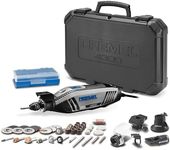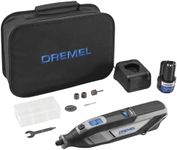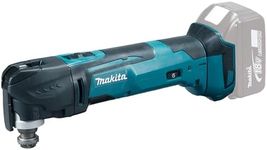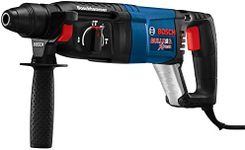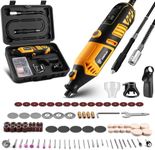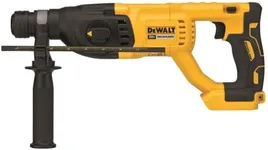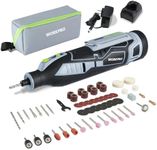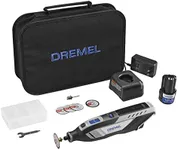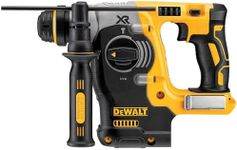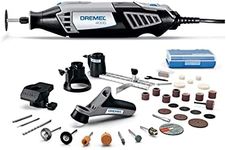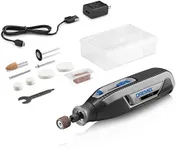Buying Guide for the Best Rotary Tools
Rotary tools are versatile handheld devices used for a wide range of tasks such as grinding, sanding, cutting, polishing, and engraving. Choosing the right rotary tool depends on what you plan to use it for, how often you’ll use it, and your comfort with handling different sizes and weights. Understanding the key specifications will help you find a tool that matches your needs and makes your projects easier and more enjoyable.Power (Motor Size)Power in rotary tools is usually measured in amps or watts and determines how much force the tool can deliver. Higher power means the tool can handle tougher materials and more demanding tasks without slowing down. For light tasks like engraving or polishing, a lower-powered tool is usually sufficient. For cutting, grinding, or working with harder materials, a higher-powered tool will perform better and last longer under stress. Think about the toughest job you plan to do and choose a power level that can handle it comfortably.
Speed (RPM - Rotations Per Minute)Speed refers to how fast the tool’s bit spins, usually measured in RPM. Some rotary tools have a single speed, while others offer variable speed settings. Lower speeds are better for delicate tasks or soft materials, while higher speeds are useful for cutting, grinding, or sanding harder materials. If you want flexibility for different projects, look for a tool with variable speed control. Match the speed range to the types of tasks you expect to do most often.
Size and WeightThe size and weight of a rotary tool affect how comfortable it is to hold and control, especially during long sessions. Smaller, lighter tools are easier to maneuver and are ideal for detailed work or for users with smaller hands. Larger, heavier tools may offer more power but can be tiring to use for extended periods. Consider how long you’ll typically use the tool at one time and whether you need precision or power for your main tasks.
Corded vs. CordlessRotary tools come in both corded (plug-in) and cordless (battery-powered) versions. Corded tools provide consistent power and are good for long or heavy-duty jobs, but you need to be near an outlet. Cordless tools offer more freedom of movement and are convenient for quick jobs or working in tight spaces, but they rely on battery life. Choose based on where you’ll use the tool most often and whether portability or unlimited run time is more important for your projects.
Attachment and Accessory CompatibilityRotary tools can use a wide range of attachments and accessories for different tasks. Some tools are compatible with more accessories than others, and some come with starter kits. If you plan to use your tool for many different jobs, check what attachments are available and how easy it is to change them. Make sure the tool you choose supports the accessories you need for your intended projects.
Ergonomics and GripErgonomics refers to how comfortable and safe the tool is to hold and use. A good grip reduces hand fatigue and helps you control the tool more precisely. Look for features like rubberized handles, balanced weight, and easy-to-reach controls. If possible, try holding the tool before buying to see if it feels comfortable in your hand, especially if you plan to use it for detailed or extended work.
Noise and VibrationRotary tools can produce varying levels of noise and vibration, which can affect comfort and usability. Quieter, smoother tools are more pleasant to use, especially for long periods or in shared spaces. If you are sensitive to noise or plan to use the tool frequently, consider models known for lower noise and vibration. Reading user reviews or testing the tool in person can help you judge this aspect.
